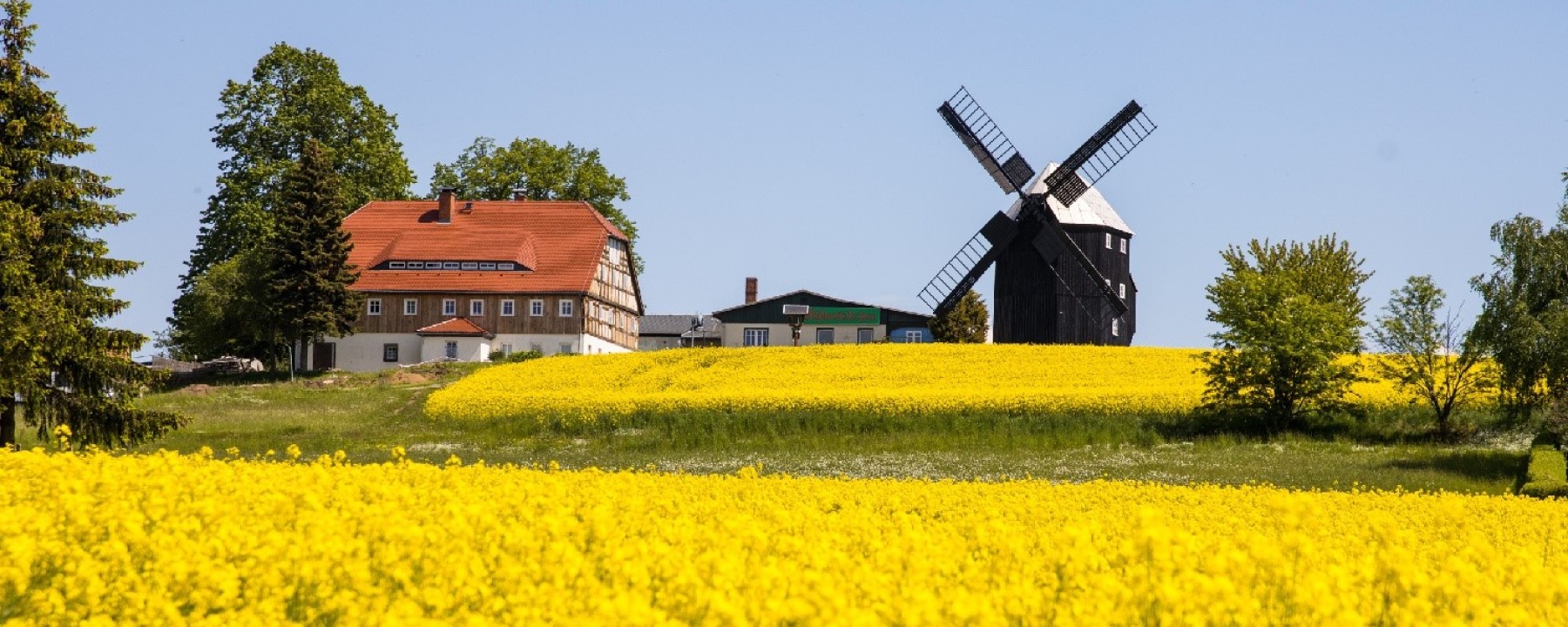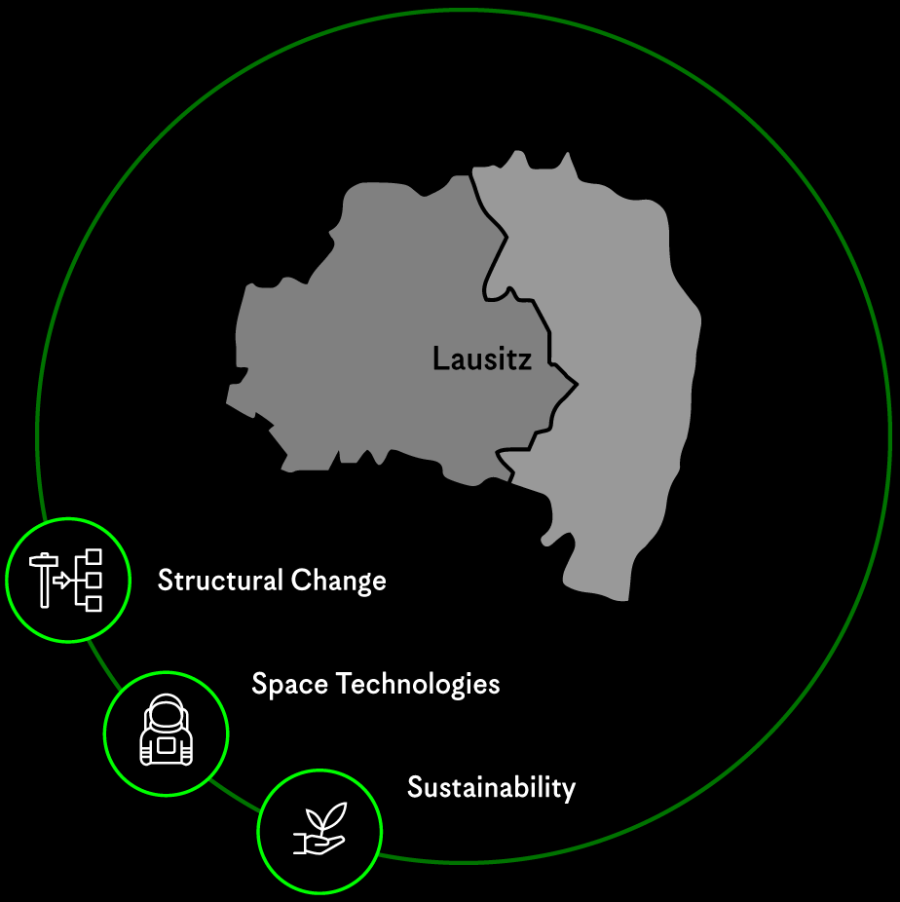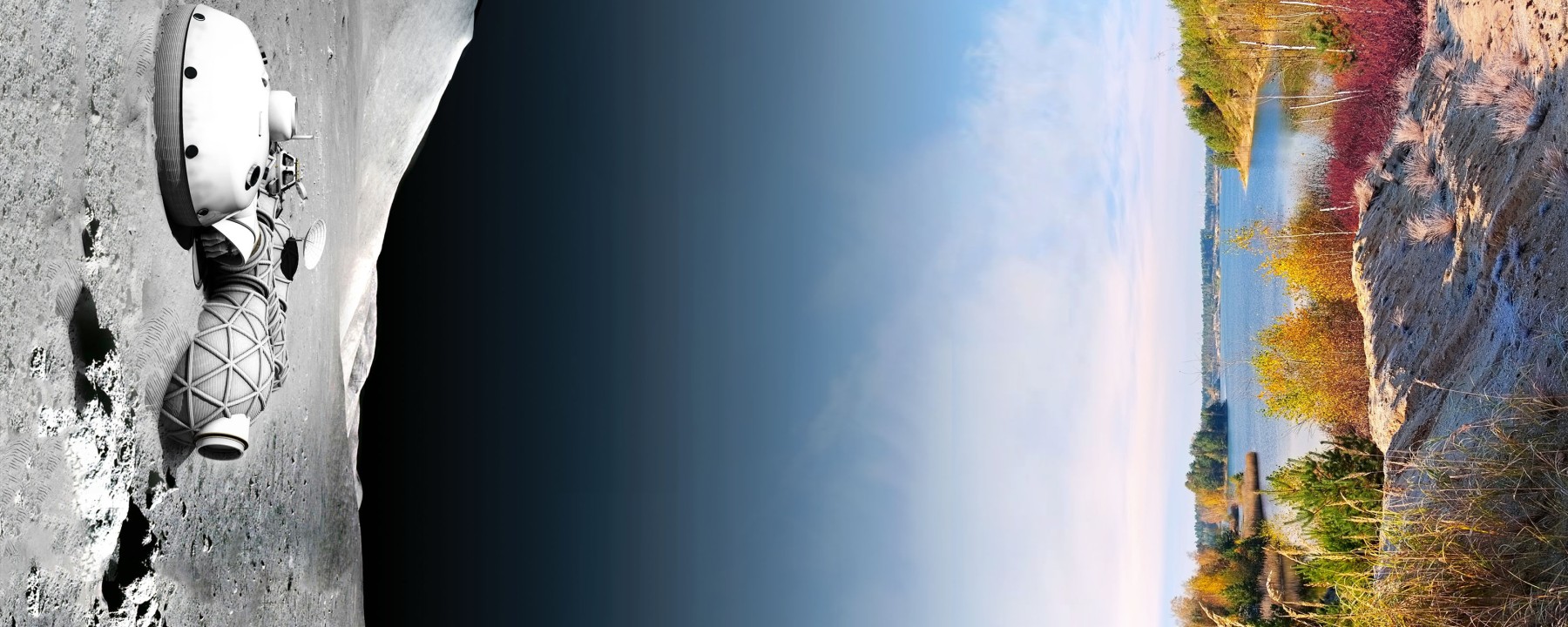
Space technologies for sustainable life on our planet
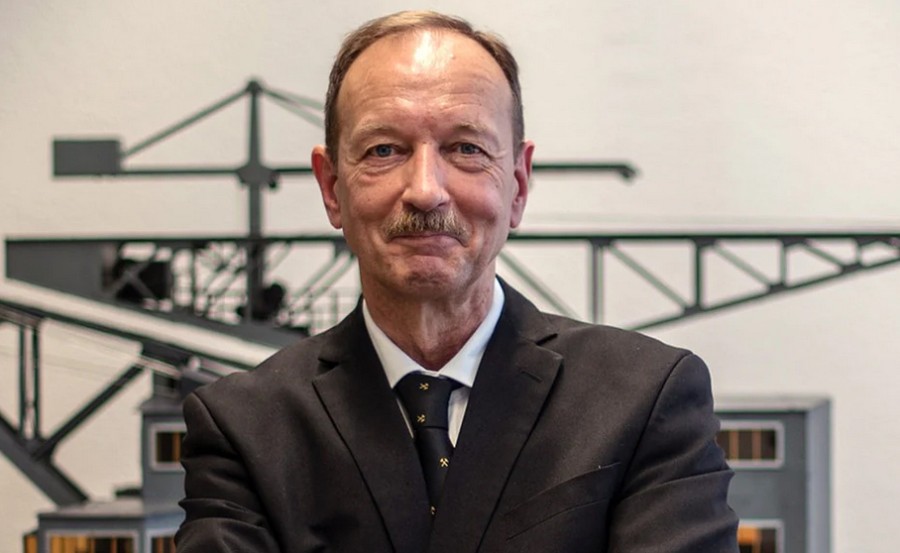
»Taking the round-about way by exploiting space technologies developed for extreme environments forces us to achieve complete sustainability and to recycle all our resources.«
Strategic Goals
-
Further development of the Lausitz as an industrial region, building on existing strengths
The coal mining area of the Lausitz is a high-tech region with extensive expertise in resources, production, energy and environmental technologies. The existing companies and industrial networks thus form an excellent starting point for innovations that contribute to the sustainable use of resources and the security of supplies both in space and on Earth.
-
Disruptive innovations for the transition to sustainability
Achieving a sustainable, and at the same time affordable and safe production and supply system, sometimes requires completely new approaches and solutions that still need to be developed. With the aim of enabling the self-sufficient supply of space stations on other planets, ERIS is developing new technologies that are intended to provide the impetus for disruptive innovations, and hence for a sustainability turnaround here on Earth.
-
Space flight as a driving force and a catalyst for innovation
Space applications have repeatedly advanced the limits of technology, even outside of space travel: Extreme requirements in terms of absolute resource efficiency, reliability and automation, require new types of solutions and promotion of learning and development processes. In particular, key technologies in the areas of material development, energy technology, sensor technology, robotics and artificial intelligence (AI) will benefit from this.
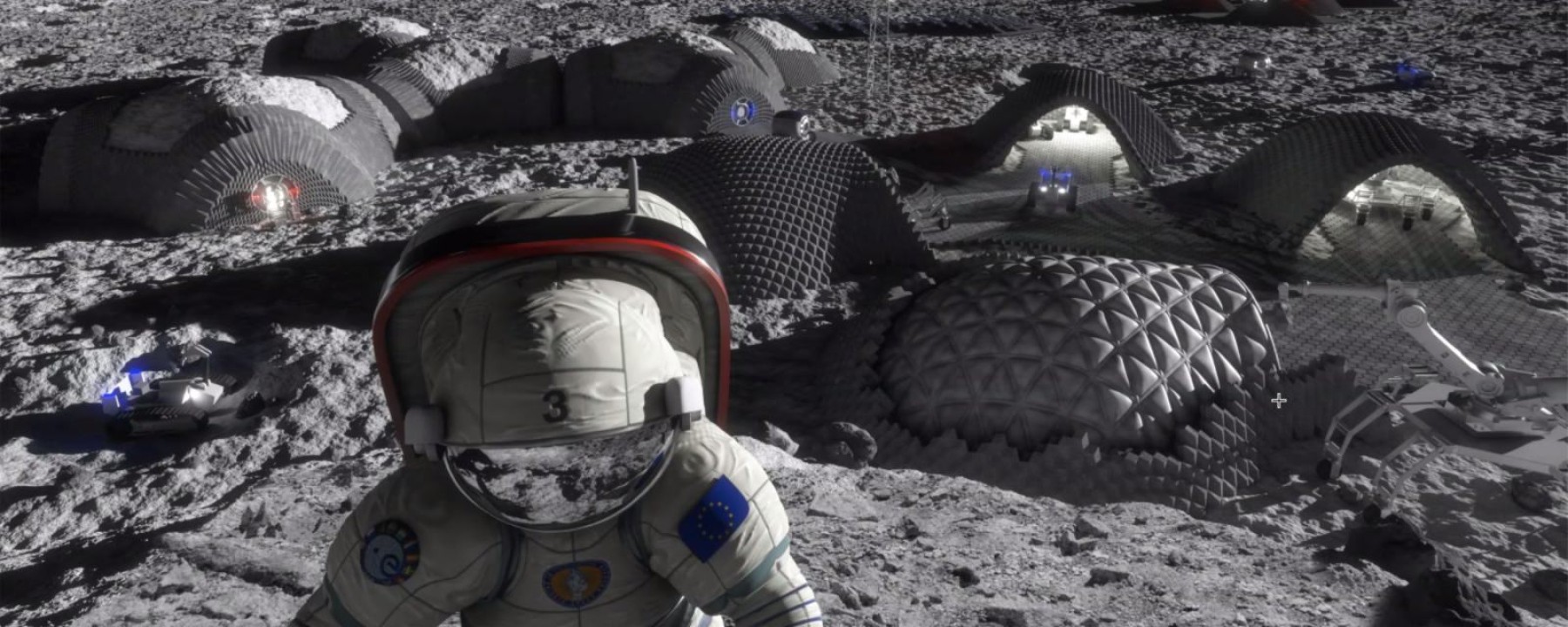
Strategic Contributions
Cutting-edge research and scientific development
Systemic Research - Merging the technologies of ISRU and Habitats:
The research areas of ISRU and habitat research are currently fragmented in terms of content and institutions. Numerous research groups worldwide are studying individual aspects and developing isolated solutions. ERIS will bring together the various fields of knowledge and technology and develop holistic system concepts that meet the complex requirements of setting up and supplying stations on other planets.
Merging of competences in space and resource research:
Research on ISRU and habitat technologies is mainly carried out as a subsidiary subject in space research institutes. The merger with outstanding scientists in the field of resource research pursued in ERIS offers great synergy and knowledge potential for all disciplines involved.
Provision of a globally unique research and test infrastructure:
A lack of experimental and testing options is currently hampering research on ISRU and habitat technologies. ERIS addresses this deficiency through large-scale research infrastructure systems specifically tailored to the needs of technology development for ISRU and habitat systems that can be used by scientists worldwide.
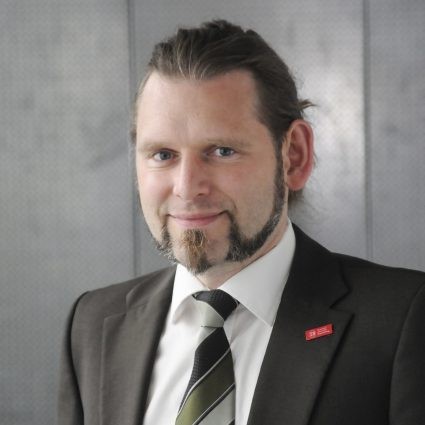
»The development of closed-loop systems for future lunar bases can provide valuable impetus that will help us establish a self-sustaining economy on Earth.«
Innovations for structural change
in the Lausitz
Integration and further development of existing competences and structures
ERIS builds on the existing competencies of the Lausitz technology region and integrates regional players from the areas of raw material extraction and basic industry, energy technology, environmental technology, plant construction, automation and robotics as well as other relevant sectors. ERIS continues to tie in with the specialist orientations of the regional universities and scientific institutions and will cooperate closely with them.
Development of a regional high-tech cluster
With the strengthening of existing companies, new settlements in the vicinity of the research facility and spin-offs, ERIS is actively developing a regional economic cluster with a focus on green tech, space travel, robotics and autonomous systems. This benefits from the knowledge generation and infrastructure in ERIS and achieves global effectiveness through highly innovative solutions.
Strengthening of the regional skilled labour base
It is a key aim that specialists should not only be attracted to the Lausitz but should also wish to settle in the region This will be brought about on the one hand by the attractiveness of the subjects on offer and the worldwide network with other universities, and the availability of programs for qualifying and developing young talent on the other. Regional companies also benefit from this. In close cooperation with the municipalities, attractive location conditions for the settlement of families and specialist staff are to be created.
Involvement of the population
ERIS will be actively present in the region and will involve the population. In addition to maintaining a visitor centre as a tourist highlight and centre for science communication, active participation in research tasks within the framework of citizen science is offered and cultural offers are created in cooperation with the regional art and creative scene.
